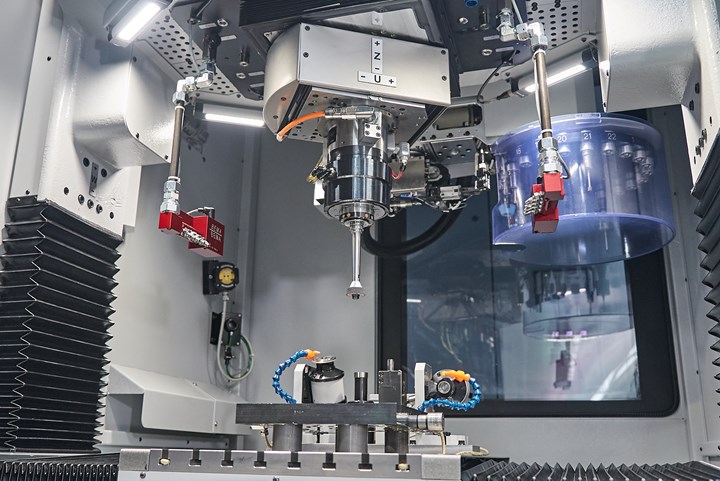Jig Grinder for Mold and Die Increases Rigidity for High Precision
The Hardinge Hauser 2000 combines grinding and hard milling features under one machine, featuring a dual-frame design, elimination of transverse forces and more to ensure highly accurate machining capabilities.
Hardinge highlights the Hauser 2,000, a newly debuted jig grinder for mold and die that combines highly accurate grinding with hard milling features. It enables a high finish (0.01 Ra), an ideal feature for some of its customers who use it for injection molds.
The six-axis machine is a dual-frame design, increasing the rigidity of the grinder, and therefore ensuring high precision; its electrical connection, heat exchangers and other systems are also made separate from the main cell to reduce vibrations and ensure optimum quality. Moreover, no transverse forces are created — the prerequisite for ultra-high geometric precision machining, according to the company. Its layout is said to aid in thermal stability.
X, Y, C, U, Z and W axes are CNC controlled, as a standard, with Fanuc 30i, and a maximum of 47-mm U-axis. The machine also features hand-scraped guideways in the X- and Y-axis. Atypical to these types of systems is an exchange grinding spindle. Proven technical features include automatic taper grinding, automatic grinding tool changer (ATC) (with 22 magazine positions) and automatic pallet changer (APC). Optimization in stroke speed and stroke frequency is said to lead to reduced grinding cycle time.
Related Content
-
Solving Mold Alignment Problems with the Right Alignment Lock
Correct alignment lock selection can reduce maintenance costs and molding downtime, as well as increase part quality over the mold’s entire life.
-
Leading Mold Manufacturers Share Best Practices for Improving Efficiency
Precise Tooling Solutions, X-Cell Tool and Mold, M&M Tool and Mold, Ameritech Die & Mold, and Cavalier Tool & Manufacturing, sit down for a fast-paced Q&A focused on strategies for improving efficiencies across their operations.
-
Machining Center Spindles: What You Need to Know
Why and how to research spindle technology before purchasing a machining center.











.jpg;maxWidth=300;quality=90)

